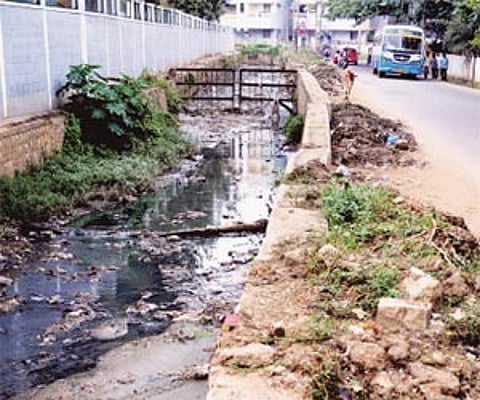

BENGALURU: The Indian Institute of Science (IISc) has come down heavily on the BBMP’s storm water drain (SWD) concretisation work. It has blamed the Palike for the city’s floods.The BBMP terms it as a great project to prevent the flow of sewage water into the lake and prevention of flood but the IISc’s recent report shows otherwise. The report ‘Frequent floods in Bengaluru, causes and remedial measures’ says, “This process of narrowing and concretising will affect the hydrological functioning of the natural drains. These drains are designed to prevent the contamination of the ground water resources. This is one of the major reasons for flash floods. The other two factors are encroachment of lake bed by means of intensive construction activity and reduction in connectivity of lakes in the valleys.”
The process involves construction of concrete retaining walls as well as the bottom and top of the drain. Of the total 842 km SWD, 18km has been concretised, while work on 68km is on. The BBMP hopes to complete the work on 200km of SWDs by December 2017.“The situation will be worse after this work is finished. It will enhance the water velocity and increase flooding vulnerability whenever there are heavy rains,” the study by Dr T V Ramachandra, Professor Energy and Wetland Research Centre, Centre for Ecological Sciences, (CES), IISc, and researchers Bharath Aiythal and Vinay S points out.The study shows how the concretisation is reducing the width of the SWDs voilating the National Green Tribunal’s (NGT) directions. The tribunal earlier this year had directed the BBMP to widen the drains and fence them.
“At Jakkasandra in Bellandur, the storm water drain has reduced by 50 per cent between 1908 and 2017 and has been concretised. Rajakaluve (SWD) connecting Bellandur and City Market has been reduced to mere 28.5m from the earlier 60m. This voilates the order of NGT which has directed it to retain the buffer zone for both lakes as well as the SWDs,” the study points out.IISc has suggested several measures to ensure protection to SWD, which includes security measures and criminal actions.